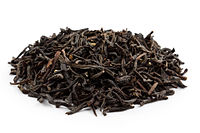
Photo from wikipedia
Yellow tea (YT), a slightly-fermented tea originated from Ming Dynasty with distinctive "Three yellows," mild-sweet smell, and mellow taste attributed to the unique yellowing process. Based on current literature and… Click to show full abstract
Yellow tea (YT), a slightly-fermented tea originated from Ming Dynasty with distinctive "Three yellows," mild-sweet smell, and mellow taste attributed to the unique yellowing process. Based on current literature and our previous work, we aim to comprehensively illustrate the key processing procedures, characteristic chemical compounds, health benefits and applications, as well as the interlocking relationships among them. Yellowing is the most vital procedure anchored on the organoleptic quality, characteristic chemical components, and bioactivities of YT, which is influenced by temperature, moisture content, duration, and ventilation conditions. Pheophorbides, carotenoids, thearubigins and theabrownins are the major pigments contributing to the "three yellows" appearance. Alcohols, such as terpinol and nerol, are attributed to the refreshing and sweet aroma of bud and small-leaf YT, while heterocyclics and aromatics forming during roasting result in the crispy rice-like large-leaf YT. Hygrothermal effects and enzymatic reactions during yellowing result in the decline of astringent substances. Meanwhile, multiple bioactive compounds such as catechins, ellagitannins, and vitexin, endow YT with antioxidant, anti-metabolic syndrome, anti-cancer, gut microbiota regulation, and organ injury protection effects. Future studies focusing on the standard yellowing process technology, quality evaluation system, and functional factors and mechanisms, possible orientations, and perspectives are guaranteed.
Journal Title: Critical reviews in food science and nutrition
Year Published: 2023
Link to full text (if available)
Share on Social Media: Sign Up to like & get
recommendations!